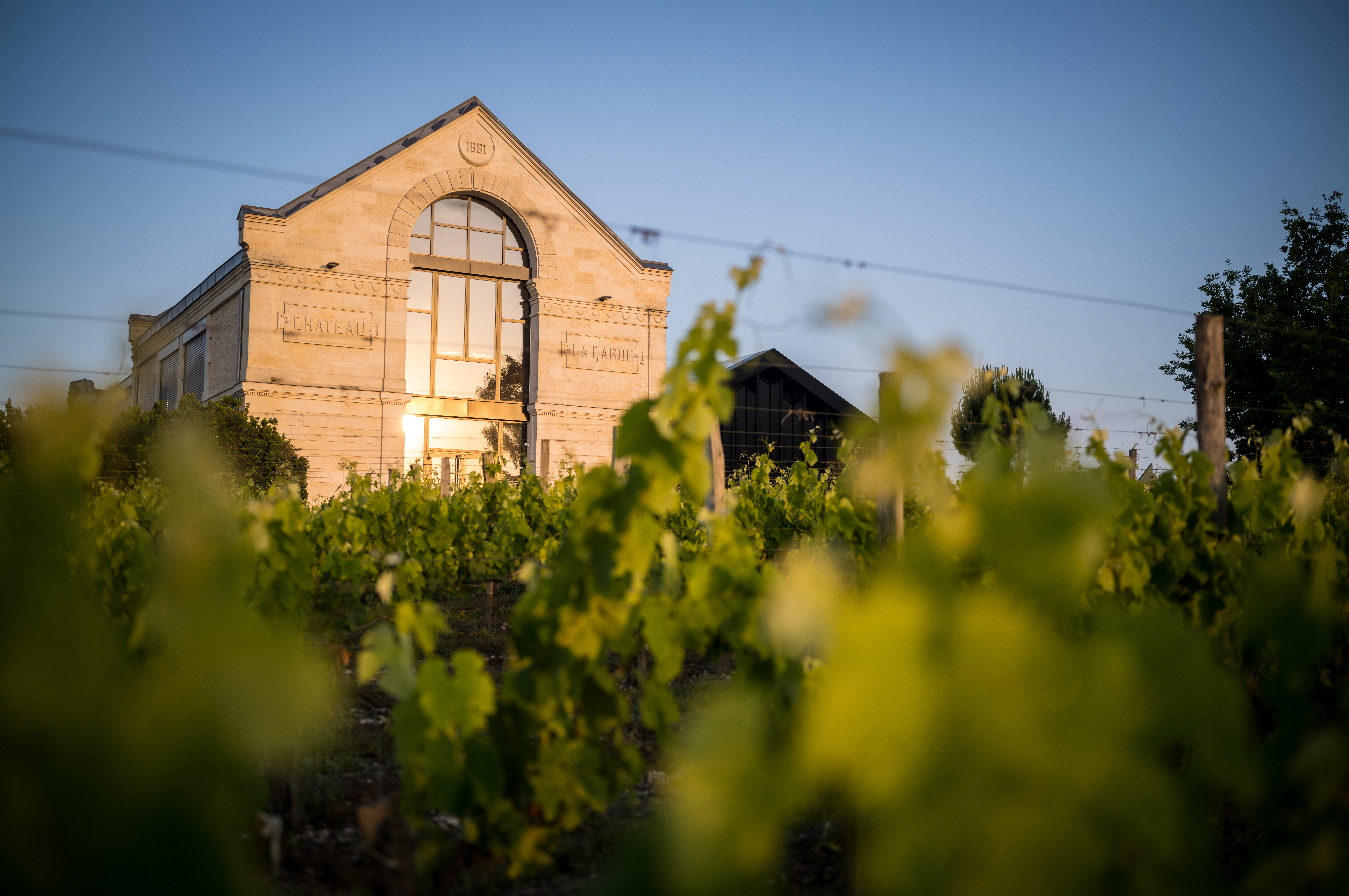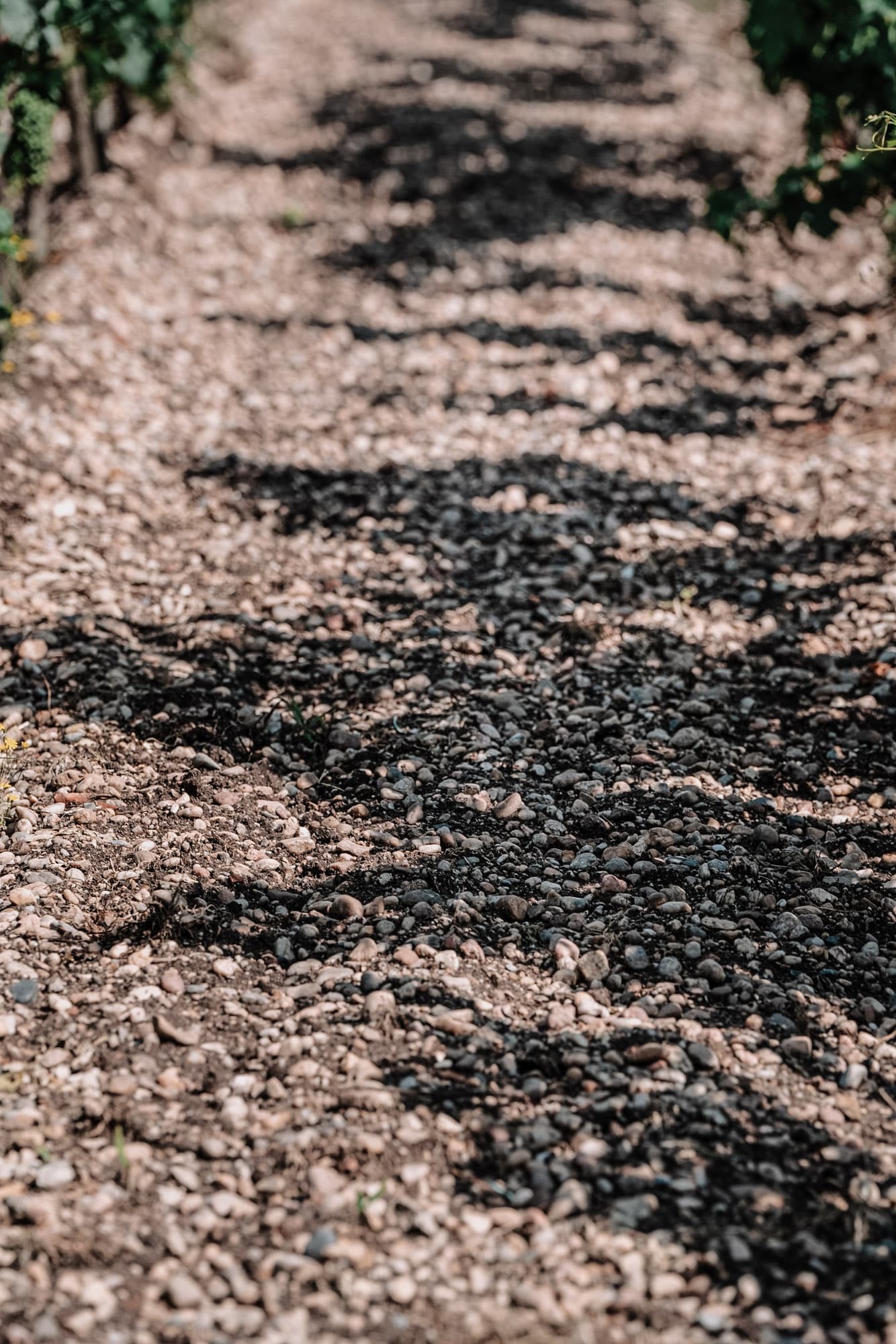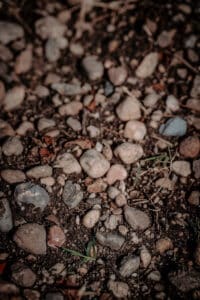
3 July 2025
16 July 2025

Château La Garde, a relatively young estate located in Martillac, in the heart of the Pessac-Léognan appellation, has been shaped by a deep and attentive dialogue with its terroir. Its remarkable diversity of soils, like a natural mosaic, brings a rare complexity to its wines. Today, this detailed understanding of the vineyard and its plot-by-plot structure enables the team to express the unique identity of this singular cru within the Bordeaux landscape.
At first glance, the vineyard seems uniform: 54 hectares in a single block. But beneath the surface, both soil and subsoil tell a different story. Deep gravel, clay-based gravel, sandy gravels, limestone… No fewer than 27 different soil types have been identified at La Garde, making it a rare case not only in Pessac-Léognan but in the entire Bordeaux region.
Three main soil families make up this mosaic:
– Gravel soils, offering excellent drainage
– Limestone-based soils, also known for their drainage properties and their ability to retain heat
– Clay-dominant soils, rich in minerals and able to retain water thanks to their fine texture
The vineyard is divided into 50 plots. Each one has its own hydrological, thermal and agronomic profile, directly influencing how the vine behaves and the quality of the fruit.

In this environment, one-size-fits-all doesn’t apply. For over three decades, the team has studied the land in detail, mapping, observing, experimenting. Today, every decision is made plot by plot, adapting to the grape variety, the soil, and the vintage’s weather conditions.
Each of the five grape varieties is planted where it performs best:
– Cabernet Sauvignon, the backbone of the Grand Vin, thrives on the gravel plateau peaking at 50 metres in altitude
– Merlot shows generosity and roundness on clay-limestone soils
– Petit Verdot finds depth and power on gravel-clay soils
– Sauvignon Blanc gains aromatic freshness from a limestone vein running through the estate
– Sémillon reaches balance on gravel-clay soils
This precision viticulture goes hand-in-hand with sustainable practices: no herbicides or insecticides, thoughtful soil management, organic inputs and cover crops. The soil is treated as a living partner.

In 2023, a new milestone was reached. The Grand Vin is now produced from just 20 hectares, selected for their strong individual character.
The remaining plots contribute to a different expression: La Terrasse de La Garde, the second wine, which benefits from greater diversity in soil and grape combinations. Its quality has naturally improved thanks to the parcel-focused refinement of the Grand Vin.
Here, the aim is not to tame the terroir, but to work with it, adjusting every gesture to preserve what the land offers. The signature of Château La Garde is not a fixed aesthetic, but a living relationship between the soil, the climate and the team of winegrowers.